
Many small flock owners have considered adding a turkey or two to their home flocks, and there are plenty of good reasons to do so. Turkeys are companionable, friendly birds who convert feed to meat more efficiently than any other variety of poultry — meat that coincidentally has lower fat content than either chicken or duck. Moreover, because they’re typically only temporary residents, turkeys have less need for permanent housing and no long-term feed costs. Plus, there’s a satisfaction that comes with knowing what went into the bird you put on the table: fresh air, sunshine, freedom and the best of care.
So why don’t more small-flock owners make the leap into turkeys? I’ll explain in one word: processing. While all poultry parents eventually find themselves having to dispatch the occasional sick or elderly bird, taking a turkey from live bird to basting dish is another matter. Professional meat processors will only deal with large quantities of birds, so raising two or three turkeys for your family’s use means learning to process them at home. The good news is there’s an easy way to do it.
ZERO PLUCKS GIVEN
If the biggest obstacle to raising turkeys is home processing, the biggest obstacle in home processing is plucking. Plucking machines cost $1,000 or more, and most can’t handle a 40-pound tom, but hand-plucking full-grown turkeys is time-consuming and physically demanding. There is another way: skinning.
This story is from the {{IssueName}} edition of {{MagazineName}}.
Start your 7-day Magzter GOLD free trial to access thousands of curated premium stories, and 9,000+ magazines and newspapers.
Already a subscriber ? Sign In
This story is from the {{IssueName}} edition of {{MagazineName}}.
Start your 7-day Magzter GOLD free trial to access thousands of curated premium stories, and 9,000+ magazines and newspapers.
Already a subscriber? Sign In
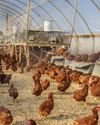
Making Bucks from Clucks
These five reasons might be why you're losing money on your chickens.

Soil Testing
Whether you are new to farming altogether or you are leasing your farmland to a producer who is unfamiliar with the practice, becoming knowledgeable about the acts of soil testing and them applying recommended soil amendments based on soil test results provides tremendous advantages to the soil, plants, and your pocketbook.

Small-But-Mighty Hot Peppers
You don’t have to have a lot of garden space or an especially long growing season to succeed with hot peppers.
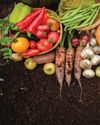
French Intensive Gardening
This permaculture system relies on soil improvement, raised beds, close spacing, companion planting, succession planting and crop rotation. Oui, oui!

FORAGE FOR FOWL
Consider these three cool-season forages as you plant your pasture with free-range poultry in mind.
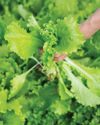
Cut-And-Come Lettuce
Maximize your profits while minimizing time to grow and seed costs with this easy cut-and-come approach to growing lettuce salad mix.
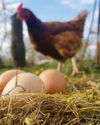
Laying AN EGG
Maintaining correct male-to-female ratios and keeping flocks of younger breeding fowl will help ensure higher fertility and hatching rates.
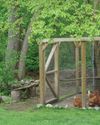
20 COOP CONSIDERATIONS
Keep these 20 things in mind when designing a home for your chickens.
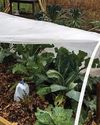
Get LOW in Spring
There comes a time when we all just want to start planting in our gardens again, and a low tunnel provides an earlier-is-better option.

Seed-Starting Soil Temps
Don't miss out on growing time by focusing only on the air temperature.